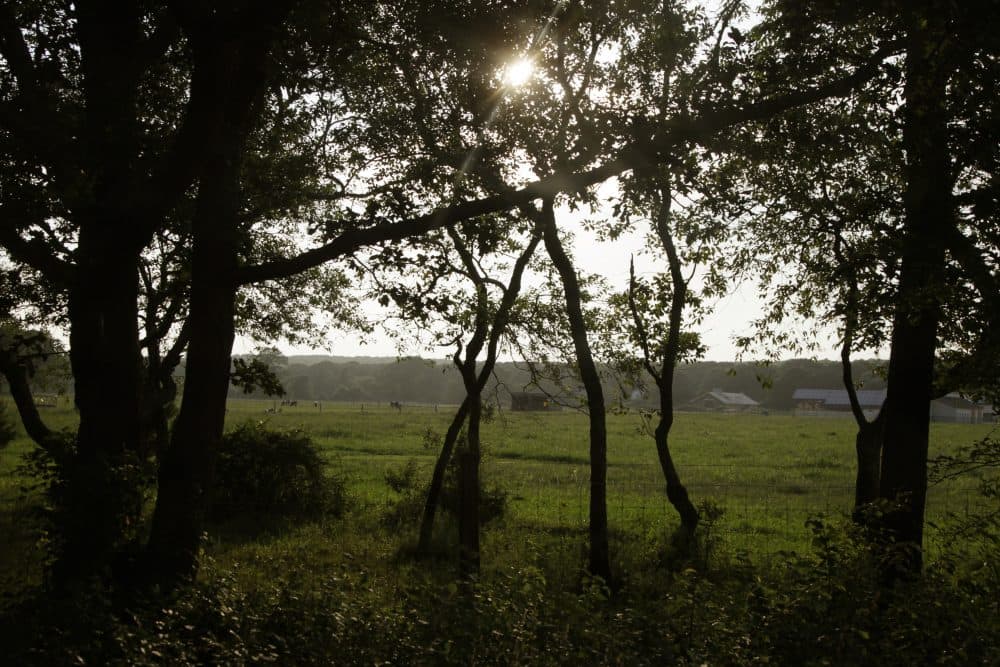Advertisement
Soon To Be Talk Of The Islands: Do We Modify Mouse Genes To Fight Lyme Disease?

This is what comes of glancing at headlines. I had formed the vague impression that the residents of Nantucket and Martha's Vineyard were on the verge of deciding whether to unleash genetically modified mice onto their exquisite but Lyme-disease-ridden islands. And not just to unleash the mice, but to equip them with a powerful "gene drive" system that would rapidly "drive" their engineered genes to dominance in the mouse population.
No. I was guilty of conflating several possible steps. Let's back up a moment. Lyme disease is a big problem in many areas, but particularly on Cape Cod and the Islands. We catch it from infected ticks, but mice (as well as deer) are part of the life-cycle of the Lyme disease bacterium. Some mice have evolved resistance to the Lyme bug. So the initial idea for islanders to consider is this:
Scientists could engineer thousands of mice to carry those naturally evolved mouse genes for antibodies against Lyme. If more mice were resistant to the bug, the spread of Lyme should diminish. If that — and several other steps — worked, then the public might consider using a "daisy drive" — a gene drive that would end after a set number of generations — to fight Lyme far more broadly.
So we're not about to wake up to a world populated by Frankenmice. (The term seems inevitable; figured I might as well get it started.) Kevin Esvelt, the MIT evolutionary biologist who's putting forth this plan — and is inviting public discussion about it — laid out exactly what he's proposing in an email:
Phase 1: Releasing large numbers of white-footed mice encoding antibodies against Lyme and/or ticks on a small uninhabited island (to be chosen by communities on Nantucket/MV in consultation with ecologists and regulators), with outcomes to be measured and assessed by independent scientists (chosen by the communities). Mice could have antibodies against Lyme, against ticks, or potentially both, with type determined by the communities working in consultation with ecologists.
Phase 2: Pending community votes to move forward based on the above results, the next phase would release equivalent mice on Nantucket and/or MV in sufficiently large numbers (over two years) to achieve a similar effect. This would require releasing more than a hundred thousand mice per island, ideally balanced by removing equivalent numbers of existing mice so that the total population stays within typical levels.
Note that in both of these cases the mice would not have any DNA from any other species; they would be 100% mouse (just engineered to have resistance evolved by other mice).
If and only if that proves effective in dramatically reducing tick-borne disease on the islands, it would then be appropriate to consider:
Phase 3: Releasing large numbers of daisy drive mice to spread the same antibodies to similarly reduce disease rates in mainland communities. This would of course require verifying that the same daisy drive architectures behave as anticipated in similarly sized populations (of worms) in the laboratory.
The daisy drive system would allow each released mouse to protect hundreds of progeny in subsequent generations, enough to disrupt the disease transmission cycle in areas larger than the islands while releasing fewer mice. Being a daisy drive, the effect would stop spreading after running out of daisy elements. That means each community could decide whether or not to use them without imposing their choice on others. The effect would be temporary on the mainland due to dilution at the edges, likely requiring new releases every ~10 years to maintain it.
If and only if that was effective, we could then consider:
Phase 4: Releasing gene drive mice to spread the antibodies throughout all populations of white-footed mice throughout eastern North America. This would require us to work with Canada and Mexico as both would be affected. It would likely last for several hundred years depending on the antibodies used.
Esvelt emphatically espouses openness and public discussion, and there will surely be plenty of it as his nonprofit project seeks approval. He has already presented to a Nantucket panel, and Martha's Vineyard is slated for next month. Readers, initial thoughts?
